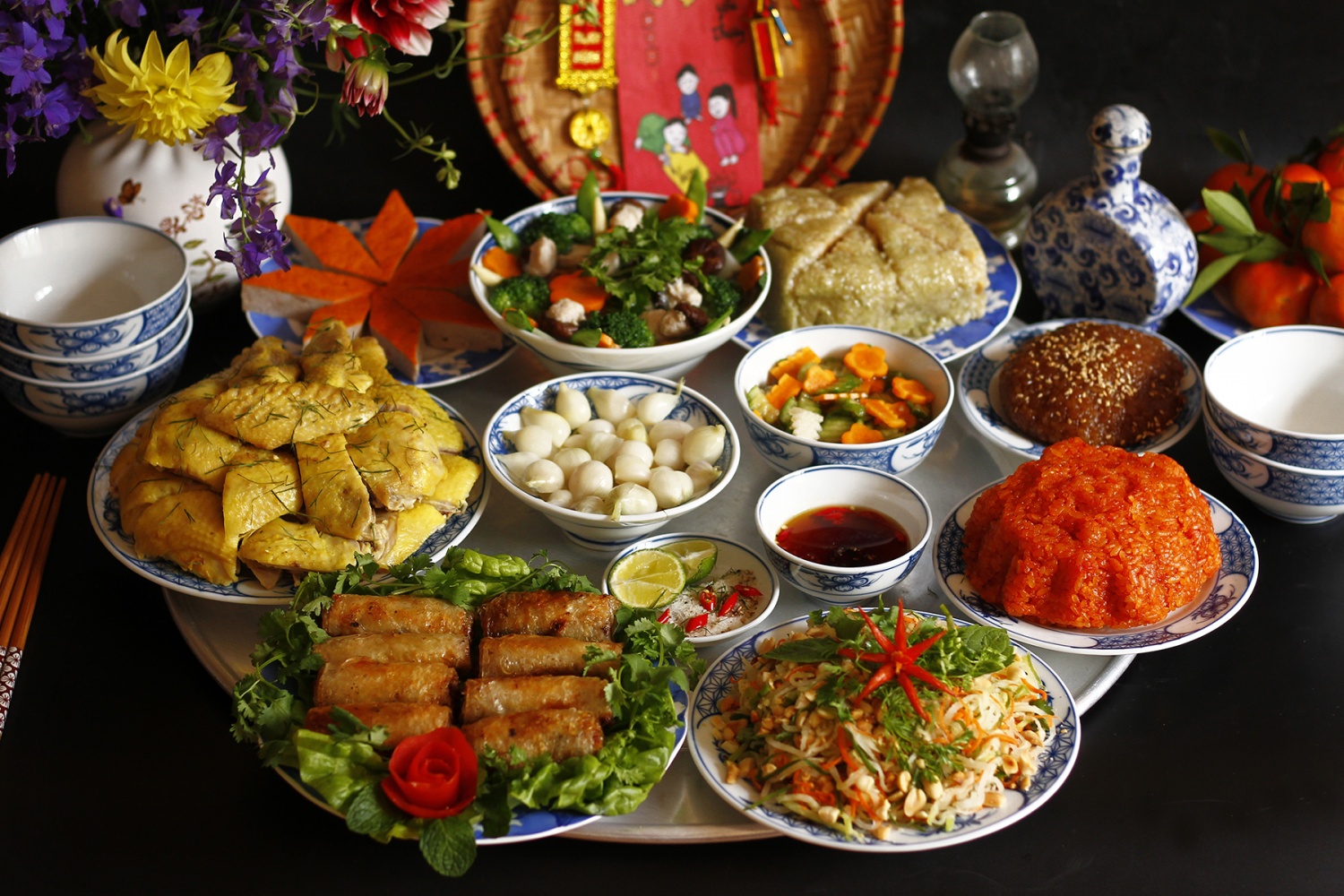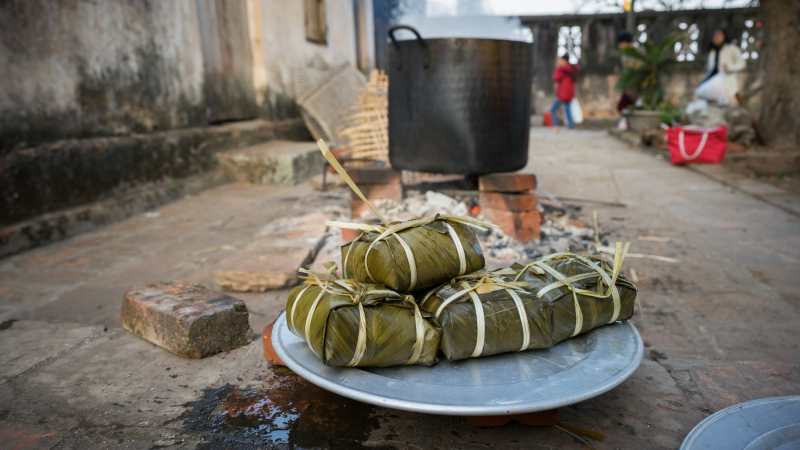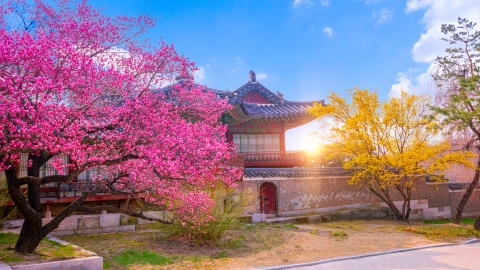The New Year's Eve ceremony, a sacred and meaningful ritual in Vietnamese culture, is not only an occasion to summarize the old year with its successes and shortcomings, but also a time for us to express our deep respect to our grandparents and ancestors. This is an opportunity for children and grandchildren to express their gratitude to those who gave birth to them and raised them, and at the same time pray for a new year of peace, happiness and prosperity.
In the warm atmosphere of the family, the year-end offering tray is carefully prepared with typical dishes of each region, showing the respect and heart of the children for the family. In the last days of the lunar year, when the weather turns cold, the scent of agarwood mixed with the smell of banh chung, boiled chicken... creates a cozy, reunited space.
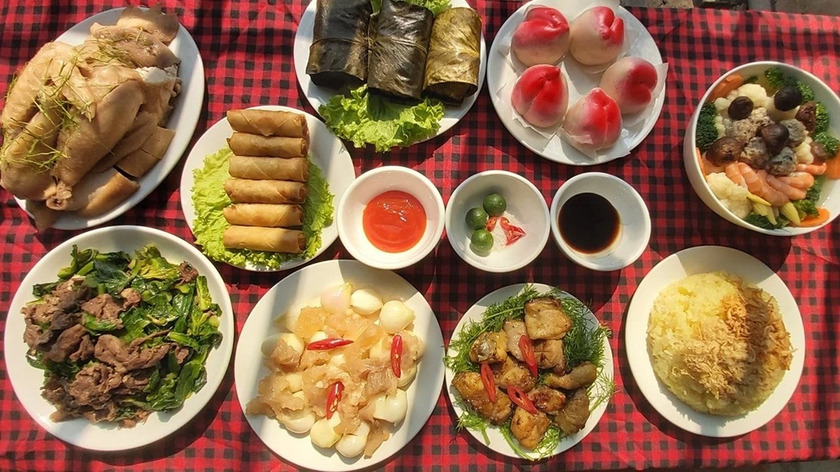
According to tradition, at the end of every year, Vietnamese families begin to reunite and offer a New Year's Eve meal, which is considered the last meal of the year.
The year-end offering is not only a simple ritual but also an occasion for everyone in the family to gather together, tell each other stories of the past year, review beautiful memories and look forward to new plans for the coming year. This is also an opportunity for children to listen to the teachings of grandparents and parents, helping each person to appreciate more the traditional values of family and nation.
To prepare for the New Year's Eve ceremony, families usually prepare two trays of offerings: the ancestral offering tray and the offering tray to heaven, earth, spirits, and wandering souls. The ancestral offering tray, placed solemnly on the ancestral altar, is an indispensable part of the New Year's Eve ceremony. This is not just a simple meal tray but also a profound expression of the respect and gratitude that descendants have for their deceased grandparents and ancestors. Through this tray of offerings, we show our filial piety and pray for our ancestors to bless our family with peace, happiness, and prosperity.
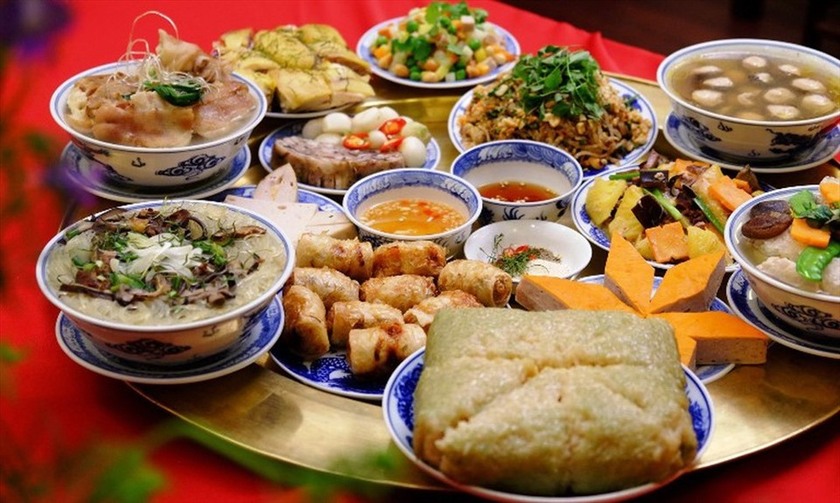
This meal is prepared quite simply, no need to be elaborate, just need the homeowner to be sincere.
The ancestral worshiping tray is often prepared very carefully, with typical dishes of each region, showing the unique culinary culture of the nation. However, no matter where, the ancestral worshiping tray has the common meaning of neatness and solemnity. The dishes are often carefully selected, from the freshest ingredients, elaborately processed and beautifully presented.
Depending on the economic conditions and customs of each family, the ancestral worshiping tray may be different. However, it is often indispensable to have traditional dishes such as banh chung, pork sausage, fried spring rolls, boiled chicken... Each dish has its own meaning, expressing respect and gratitude to ancestors. For example, banh chung symbolizes the land, symbolizing the attachment of people to their homeland and country. Pork sausage and fried spring rolls show the ingenuity and meticulousness of women in the family. Boiled chicken symbolizes luck and prosperity. In addition to traditional dishes, the ancestral worshiping tray may also have fresh fruits, betel, wine, and indispensable tablets of grandparents and ancestors. All are arranged in a balanced and harmonious way, creating a solemn and cozy space.
The offering tray for heaven and earth, ghosts and wandering souls is placed solemnly in the yard or in front of the house. The offering tray for heaven and earth is often prepared very carefully, with simple offerings but with deep meaning. In addition to basic offerings such as fresh fruit, betel and areca nuts, wine, we can also prepare traditional dishes such as sticky rice, boiled chicken, candy... Each dish has its own meaning, expressing people's sincerity and gratitude.

For Northerners, the New Year's Eve offering tray must always be complete: 4 bowls, 4 plates (small offering tray); 6 bowls, 6 plates or 8 bowls, 8 plates for a large offering tray. Some families also prepare large offerings trays stacked 2 to 3 levels high.
Placing the offering tray outdoors is not only a ritual but also has a deep spiritual meaning. According to folk beliefs, offering outdoors helps gods and spirits easily receive offerings and bless the family. At the same time, offering outdoors also creates a sacred space, helping everyone in the family feel more peaceful and relaxed.
The offering tray should be just enough, suitable for the number of people in the family, not too much to cause excess, waste, and insincerity, but the sincerity will be felt by the gods and ancestors. Nowadays, many families, especially those living in apartments or with limited space, only prepare one year-end offering tray in the house.
Indispensable items in the New Year's Eve ceremony such as incense and lamps symbolize the connection between Yin and Yang. Incense symbolizes the stars, and lamps represent the Sun and Moon. On the altar, you need to prepare 2 lamps to create balance and solemnity for the ceremony. These items help the homeowner create a sacred space.
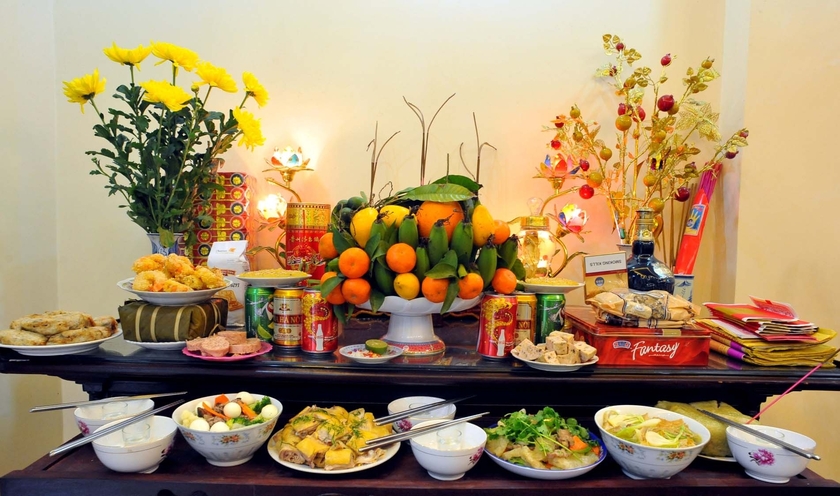
To perform the New Year's Eve ceremony, each family prepares a neat tray of food to offer to grandparents and ancestors.
The five-fruit tray consists of five different types of fruit, each with a symbolic meaning representing the homeowner’s wishes, from wealth to peace. The fruits on the tray must be edible, attractive, and not bruised or wormy.
In the North, the New Year's Eve offerings are very thoughtful and meticulous, with traditional dishes imbued with traditional culture. In addition to the above dishes, pork sausage, bamboo shoot soup and pickled vegetables are also familiar dishes.
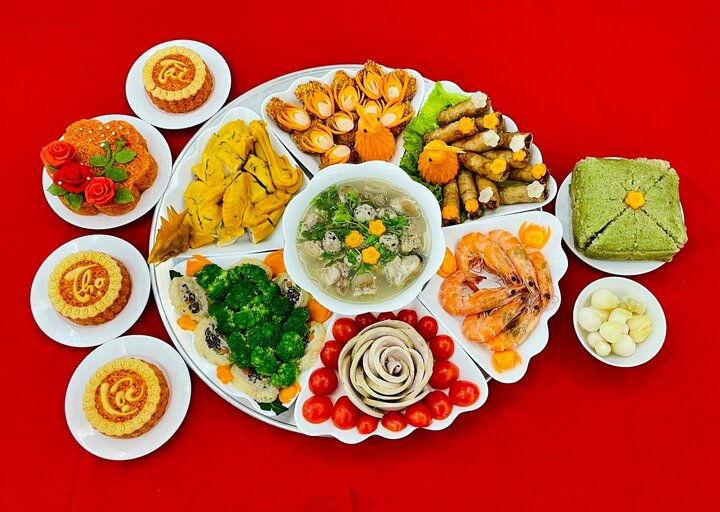
The last meal of the year means saying goodbye to the old year and wishing for a lucky and prosperous new year.
The New Year’s Eve offerings of the Central region are simpler, with typical dishes including pork sausage, chicken, pork and banh tet. In particular, pickled onions are also an indispensable dish.
Different from the North and Central regions, the New Year's Eve offerings of the Southern people often have dishes with strong tropical flavors. With a warm climate, the Southern offerings are more abundant and diverse with dishes such as bitter melon soup - a dish that is both rich and has a cooling effect, spring rolls, braised pork and eggs, shrimp and pork salad, and banh tet served with pickled onions.
When the offerings are prepared neatly, the incense smoke is billowing, the atmosphere becomes solemn and respectful. At this time, the elders in the family will take on the role of the main celebrant. Each family member sincerely performs the ceremony, praying together for a peaceful and happy new year. Children are also guided by their parents to understand the meaning of the ceremony, helping them to form gratitude towards grandparents, ancestors and gods.





